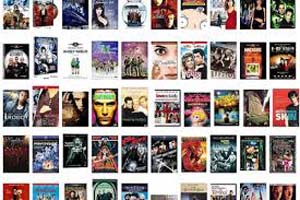When the answer to “whats on?” is “everything” and the answer to “whos on?” is “no-one”, then content discovery and experience is king The explosion in the number of connected devices and changing consumer habits in demanding access to content Anytime, Anywhere presents a number of complex challenges for broadcasters, Pay TV Operators and content […]
When the answer to “whats on?” is “everything” and the answer to “whos on?” is “no-one”, then content discovery and experience is king
The explosion in the number of connected devices and changing consumer habits in demanding access to content Anytime, Anywhere presents a number of complex challenges for broadcasters, Pay TV Operators and content providers in delivering a seamless consistent viewing experience that combines Live and On Demand programming to their respective audiences. The first of this two-part series examines the business models that are being adapted by Multichannel Video Platform Distributors (MVPD) and pure OTT players. The second part, which will be published next month, will look at the technology challenges in delivering a true multiscreen experience to audiences.
Is this just OTT?
“Over the Top” (OTT) delivery is used to describe the delivery of streaming video over IP-based networks, predominantly the Internet. However, there are only a handful of companies that are truly engaged in a pure OTT delivery business model. These companies tend to be disruptive to existing broadcasters and pay TV operators.
Pure play OTT providers, such as Netflix present a disruptive service to incumbent broadcasters and Pay TV operators in a given market. For pure play OTT providers to enter new markets, they need to secure the relevant rights for their content catalogue but need no further relationships with incumbent operators in a particular country to deliver their service, as they rely on the open internet and global Content Delivery Network (CDN) providers; a true OTT business model.
For incumbent players within their respective markets, the key objective is to expand their existing services to connected devices in order to provide greater choice to their audience in consuming services; delivering content across managed and unmanaged networks to managed and unmanaged devices; and multi-platform video distributors (MPVDs).
Multiscreen revenue opportunities
In general, broadcasters, pay TV operators and content providers are leading their multiscreen revenue initiatives by expanding their existing business
models.
Pay TV Operators
The initial use of multiscreen delivery for pay TV operators was to provide a subscriber retention tool in order to provide additional enhanced services to their higher paying customers. OSNs key objective behind launching OSN Play last year was to retain existing subscribers.
In the UK, pay TV operators, such as BSkyB have evolved from this customer retention model to provide multiscreen-only-subscription packages providing a subset of their live channels and VOD catalogue to subscribers. Monetisation is primarily through the extension of the subscription VOD business model (S-VOD) model, with additional transaction revenues (T-VOD) opportunities through access to pay-per-view content.
Broadcasters
Free-to-air broadcasters have followed their audience online through the delivery of on-demand catch-up TV services.
Cable Operators
OTT provides cable operators with opportunities to enhance their existing services by introducing IP delivery of metadata and other additional services across their two-way cable network. As cable operators operate within a fixed geographic network, OTT also provides a mechanism of increasing the subscriber base by offering OTT-delivered services to off-net customers. Revenue generation is based on a pay TV S-VOD model, again with the ability to generate additional T-VOD revenues through pay-per-view movies.
Pure Play OTT Operators
Pure play OTT operators who aggregate content from multiple content providers primarily lead on either A-VOD (YouView), T-VOD (FlmFlex) or S-VOD business models (Netflix, Blinkbox).
Content Providers
There are also opportunities for large content providers in markets where the volumes of traditional DVD formats are low due to piracy. This presents opportunities for content providers to provide their asset catalogues on a direct-to-consumer basis in markets where they will not cannibalise large traditional DVD sales.
Multiscreen technology challenges
There are a number of functional components that need to be considered in technical building blocks in order to provide a multiscreen OTT experience. Together, these building blocks form the basis of a broadband headend, which for existing operators, is used to extend the functionality of the existing broadcast headend in order to deliver content programming and the user experience to viewers on a wide range of connected devices including PCs, smartphones, tablets, hybrid set-top boxes, connected TVs and games consoles.
* Management of the metadata workflow (ingest, tone of voice, presentation) through a Video Content * Management System (VCMS)
* Management of the content pipeline (ingest, transcode, encryption, delivery) through workflow orchestration
* Management of a consistent end user experience across connected devices
Connected Device Management
For pay TV operators, the broadband headend requires integration into existing Subscriber Management Systems in order to extend the concept of tiered subscription packages across connected devices. FTA broadcaster services require integration into an external Advertising Sever platform to provide monetisation of content through post, mid and pre-roll advertising. Services providing transactional-based content require integration into payment gateways in order to charge customers for content.
Management of the metadata workflow
In a connected world, metadata provides a key differentiator for content search and discovery. The key component for managing metadata is a VCMS. Typically, a platform must be able to ingest assets and metadata from a number of content providers. Although there are emerging standards for metadata such as TVA, the metadata ingest process must be able to deal with variances in the formats that content providers use for providing metadata. In fully automated systems, there may also be additional metadata files that provide updates.
Depending on the content provider, the metadata provided with assets can vary, from the provision of a title, through to comprehensive metadata that includes title, summary, still images, full cast details, subtitles, content rights windows and a list of devices that the content is authorised to play out on.
Therefore, VCMS platforms need to be able to cater for the variance in the provided metadata and allow separate workflows to be created in order to allow the content editors to update and provide additional missing metadata.
Due to the different form factors of multiple devices, the VCMS needs to be flexible enough to store different versions of the metadata that are required for the form factors of different devices.
Content rights
The licensing of content presents a number of issues in terms of providing a consistent catalogue of content across multiple connected devices, and the policies that should be implemented for the content lifecycle. If content has multiple rights windows, then should the assets be maintained until the content is completely out of rights? Should the content be deleted when the first rights window has completed only to be re-ingested at a later date? Are there contractual commitments to content revocation that need to be captured and adhered to? Are content rights available for all platforms and available to be delivered over both fixed and mobile networks?
Content Pipeline
The content pipeline covers the ability to ingest both live and on-demand assets into a broadband headend. A typical content pipeline for VOD and Live for multiscreen delivery is shown above.
VOD Asset Workflow
VOD assets are typically delivered to the broadband headend using secure FTP from external providers, or through integration with an existing broadcast headend MAM for assets that have already been ingested for scheduling and broadcast.
Typically, assets are transferred to drop folders, which then allows the workflow management of a Video Content Management System to detect a new asset has been delivered, and then to initiate the appropriate workflow.
Depending on the format of the assets (Mezzanine or ready for broadcast), assets may need to be encoded into a number of different formats so that they can be played out across different form factors of the targeted connected devices.
In this scenario, a high bit rate mezzanine asset is typically used in order to ensure that the quality of the transcoded lower bitrate asset for broadband delivery can be as high as possible. Additional supporting assets, such as trailers and images can also be ingested into the service for further workflow processing. A typical activity is to produce a number of different image sizes from a single ingested asset to pre-agreed sizes in order to provide consistency in the presentation of the images across different connected devices and display form factors.
Typically, target end devices do not support a single Digital Rights Management (DRM) format for content protection. Therefore, the broadband head-end may be required to create multiple encrypted output files for each supported DRM format. Popular DRM technology for encrypting assets includes Microsoft PlayReady DRM, Adobe Flash Access 2, Widevine and Marlin.
The packaging server ingests multi-bitrate audio and video transport streams or SDI outputs from the encoders. The packager then creates the necessary manifests, playlist and containers required for each streaming format (HLS, Smooth, DASH, etc).
It is commonplace to have the encryption functions integrated with the packager also. This allows integration with multiple DRM vendors. Packagers can typically scale to support hundreds of simultaneous streams.
A pair of packaging servers (2 x 4 CPUS) can typically handle packaging and encryption of up to live 100 channels with eight profiles each.
Content Delivery
Modern Origin Servers support all widely used HTTP live streaming protocols and HTTP progressive download. HTTP protocol has been widely adopted by the internet as the delivery mechanism for static content.
Almost all of the newly developed adaptive bitrate streaming and progressive download technologies are now based on HTTP.
As HTTP is so widely used, all networks (open or closed; public or private; wired or wireless) can pass such protocol through today without change.
Similar to the traditional TV operator, service and content providers are offering or planning to offer live TV or VOD to the connected devices. The next logical step to enhancing these services is by offering Start Over, Catch Up and full Network PVR services to any connected device.
Modern multi-screen encoding platforms provide a framework that integrates all the components residing in the headend to provide an end-to-end system for the delivery of live (Linear) TV, VOD, Start Over and Catch Up TV applications for OTT video services. Encoding standards and adaptive streaming approaches have converged to a point which means that even if a device requires a different container format, this conversion can be done cost-effectively service side and cached by the CDN.
There are still challenges surrounding different encryption standards, however, which means the same asset must sometimes be duplicated in order to serve it using multiple DRM technologies.
This will eventually be solved once a wide variety of devices support MPEG DASH, which provides a common encryption standard for video. We typically work with Apple HTTP Live Streaming (HLS). Adobe HTTP Dynamic Streaming (HDS) and Microsoft SmoothStreaming formats. H.264 is the common encoding format.
The selection of formats is usually determined by a combination of device support and DRM requirements. We are seeing widespread adoption of PlayReady DRM across many devices and also the ability to support this across multiple streaming formats.
In the second part of this series, we shall examine the live pipeline, content delivery networks and how to manage the experience across multiple devices.















































































